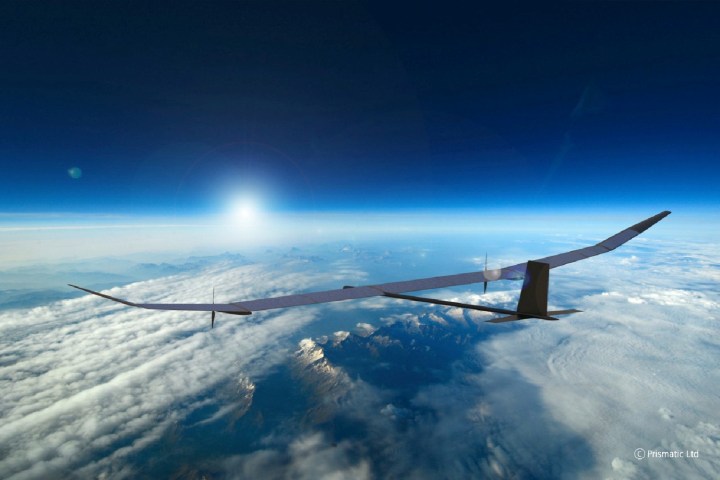
An average drone has a flight time of around 10 to 20 minutes. Record-breaking drones, meanwhile, can eke out anything from a few hours to, in the case of one diesel-powered drone, a few days. None of these can hope to hold a candle to a new solar electric unmanned aerial vehicle (UAV) being developed by cutting-edge British companies, BAE Systems and Prismatic.
They are collaborating on the development of a new high-altitude, long-endurance drone called PHASA-35, which aims to achieve flight times of anywhere up to an astonishing 12 months. To do this, it will use a combination of long-life battery technology and ultra-lightweight solar cells that will allow it to power itself using the sun’s rays.
This isn’t your ordinary drone, of course. It has a wingspan of 35 meters, which is around half that of a Boeing 747. However, it is also extraordinarily light, weighing just 150 kilos — or 0.05 percent of the 747’s maximum takeoff weight. The craft has been in development for the past two years, and a quarter-scale model took to the skies in 2017 for a test flight. The team developing it is hoping that the real thing will be ready for test flights of two production prototypes sometime in the second half of 2019.
“PHASA-35 is an air vehicle that is being developed to be capable of flying in the stratosphere at 70,000 feet above the earth, and is anticipated to fly for up to a whole year at a time,” a spokesperson from BAE Systems told Digital Trends. “The platform can achieve these previously unseen performance characteristics due to its extremely lightweight and innovative carbon fiber construction, coupled with its highly efficient solar panels which are able to power the vehicle and also charge the batteries for nighttime operation.”
BAE’s spokesperson said that they perceive multiple uses for the craft, including communications, providing GPS coverage to remote areas, and optical imaging.
If the name BAE Systems sounds familiar, that is because it has previously been behind such science fiction-sounding projects as military drones which can be “grown” using chemistry in large-scale labs and energy-scattering deflector shields. The fact that this latest project arguably isn’t its most ambitious sounding concept yet speaks volumes about how much exciting work the company is engaged in!
Editors' Recommendations
- Watch this festive drone show fly straight into the record books
- Wing builds bigger and smaller drones for more deliveries
- New drone owner? Check out this video before you fly
- Watch this incredible drone fly-through of Man City’s Etihad Stadium
- Why engineers are studying dragonflies to build the next generation of drones


